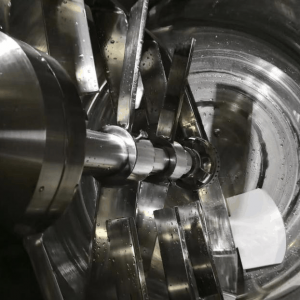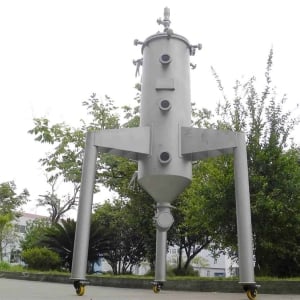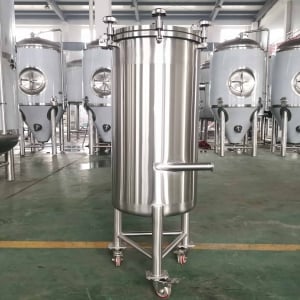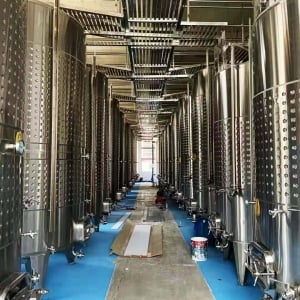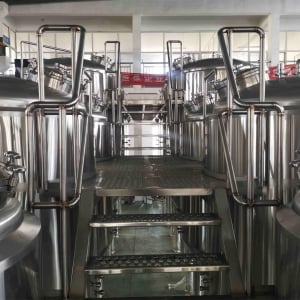7 BBL Jacketed Fermenters
7 BBL jacketed fermenter are essential vessels enabling professional microbreweries to convert sugary wort into beer efficiently at annual production scales between 1,000-3,000 barrels. This guide provides an overview of 7 BBL fermenter configurations, top suppliers, pricing considerations, installation best practices, and pros vs cons comparisons.
Overview of 7 BBL jacketed fermenter
Fermenters provide temperature controlled environments facilitating yeast metabolizing sugars into alcohol, CO2, and flavorful compounds. 7 BBL sizes produce ~220 gallon batches suitable for microbreweries.
Table 1: Background on 7 BBL jacketed fermenter
| Attribute | Details |
|---|---|
| Purpose | Facilitate fermentation converting sugars into beer |
| Batch Size | Typically 7 barrels or ~220 gallons |
| Scale | Suitable for breweries with ~1,000-3,000 BBL annual output |
| Key Components | Fermenter cone, temperature control jackets, sensors |
| Use Point | After boiling, before filtering/serving |
For commercial brewers seeking flexibility around experimenting new styles in small batches while scaling production volumes efficiently, 7 barrel fermenters enable the right capacities for ongoing growth into wider distribution.
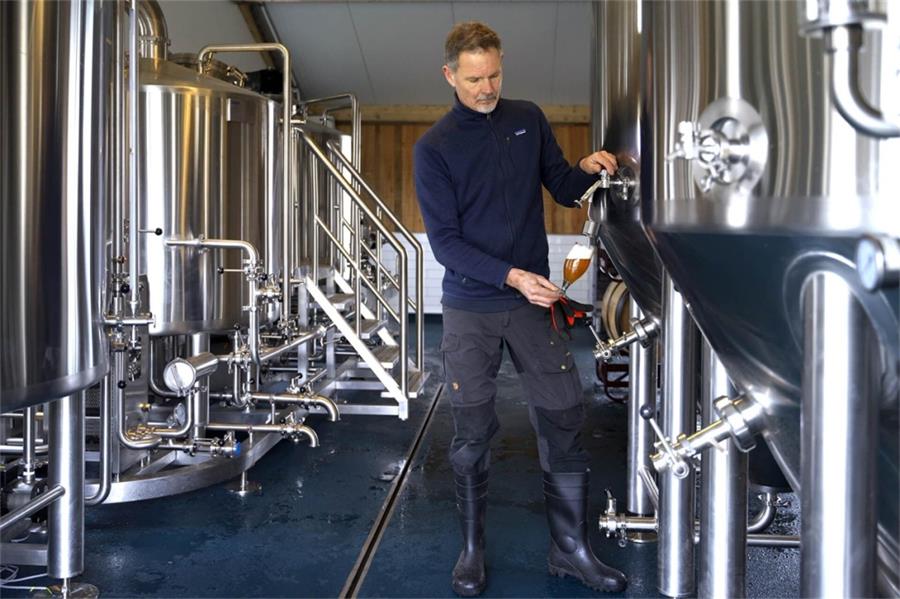
Types of 7 BBL jacketed fermenter
While most fermenters share fundamental functions for hosting yeast activity, choices around conical vs cylindrical profiles, chilling methods, and levels of automation provide options when specifying equipment.
Table 2: Types of 7 BBL Fermenters
| Types | Attributes | Considerations |
|---|---|---|
| Conical bottom | Angled cone walls and collection point | Easier yeast harvesting |
| Cylindrical | Straight walls and flat bottom | Simpler construction, easier cleaning |
| Single wall | No exterior temperature control layers | External chilling needed |
| Jacketed | Hollow walls for running glycol/liquids | Tighter temperature control |
| Cooling systems | Glycol, Freon, CO2, chilled water | Infrastructure, environmental factors |
| Control systems | Manual vs programmable | Precision, labor factors |
Key decisions around fermenter cone angles, jacket layers, chilling systems, and automation levels provide avenues for customization catering to brewers’ specific workflow, infrastructure, quality, and budget situations when investing in cellar equipment.
Overview of the Commercial Beer Brewing Process
In typical commercial beer production environments after the mashing and boil stages, fermenters host critical biochemical reactions:
- After boiling, hot wort is rapidly chilled then transferred into fermenters.
- Yeast is pitched into cooled wort to initiate the fermentation stage. Key transformations include:a. Yeast metabolizing sugars into alcohol which serves as both a product and preservativeb. Carbon dioxide getting produced as a metabolic byproduct providing natural carbonationc. Diacetyl and other flavor/aroma compounds evolving from yeast activityd. Settling of heavier yeast and proteins to the fermenter cone bottom
- Temperature control provided by insulated, jacketed walls maintains ideal conditions for healthy fermentation.
- Yeast may get harvested and repitched to save costs before beer moves to conditioning tanks, gets filtered, and packaged.
Careful fermenter stage monitoring and temperature modulation ensures properly attenuated beer reaching desired alcohol levels with balanced flavors, carbonation, clarity, and quality attributes meeting branding objectives.
Key Specifications for 7 BBL jacketed fermenter
Crafting an appropriately specified fermentation vessel system requires assessing crucial elements like batch requirements, space constraints, chilling capabilities, and automation needs.
Table 3: 7 BBL Fermenter Equipment Considerations
| Parameter | Typical Options | Key Factors |
|---|---|---|
| Volume | 6.5 – 7.5 barrel range | Standard increments |
| Height | 72 – 96 inches | Vertical space, ergonomic considerations |
| Diameter | 30 – 36 inches | Floorspace limitations |
| Material | Stainless steel (304/316) | Corrosion resistance, cleaning, cost |
| Temperature range | 32° – 75°F capability | Yeast strain requirements and quality objectives |
| Cooling systems | Glycol, water, Freon, CO2 | Infrastructure availability, rapid cooling needs |
| Controls | Manual vs automated | Precision, flexibility, data logging |
Prioritizing space constraints, production batch goals, chilling capabilities, and budget delivers appropriate fermenter performance specifications optimal for quality, volumes, and growth objectives.
Thoughtful equipment decisions provide strong foundations facilitating the elevated fermentation consistency vital for microbreweries seeking expanding distribution in competitive craft beer categories.
Top 7 BBL jacketed fermenter Manufacturers
Reputable brewhouse outfitters offer versatile combinations of fermenters, brite tanks, and storage vessels for complete cellar needs – ranging from pilot batches through to large production scenarios.
Table 4: Leading 7 BBL Fermenter Producers
| Company | Offerings |
|---|---|
| Rolec Craft Brewing | Fully customizable cellar suites |
| JV Northwest | Quality USA made equipment |
| AAA Metal Fabrication | Custom tanks |
| Psycho Brew | Specialty craft brewhouse engineering |
| The Vintner Vault | Custom brewing and cellaring solutions |
These commercial providers offer 7 BBL fermenters spanning:
- Standard vs custom designs: Pre-engineered models balance cost while customized fabrications facilitate niche layout needs
- Conical vs cylindrical: Matching ease of cleaning against yeast harvesting priorities
- Glycol vs Freon/CO2 chilling: Accommodating infrastructure availabilities
- Automation levels: Manual operation to sophisticated monitoring/control
Top brewhouse engineering teams collaborate iteratively with clients to translate specific infrastructure restraints and quality ambitions into tailored fermentation implementations productizing unique craft beer experiences.
Pricing Considerations on 7 BBL jacketed fermenter Tanks
Quality fermenters capable of delivering consistent quality beer at commercial production scales carry prices from $10,000 to $60,000+ for fully outfitted 7 BBL packages.
Table 5: 7 BBL Fermenter Equipment Pricing
| Component | Price Range |
|---|---|
| 7 BBL fermenter | $10,000 – $35,000 |
| Jacketing and chilling system | $5,000 – $15,000 |
| Racking and transfer provisions | $2,000 – $5,000 |
| Integrated control system | $5,000 – $10,000 |
| Total System Investment | $25,000 – $60,000+ |
While basic temperature-controlled vessels start around $10,000, fully automated packages with advanced jacketing and controls often exceed $60,000.
As with most commercial scale equipment, upfront capital investments Runs from tens of thousands up to a quarter million dollars outfitting an entire brewhouse. So accurately balancing feature sets against budgets prevents overspending.
Best Practices for 7 BBL jacketed fermenter Installation and Operation
Properly installing cellar equipment combined with strict cleaning regimens provides optimal fermentation environment for healthy yeast while preventing quality issues or contamination.
Table 6: 7 BBL Fermenter Best Practices
| Activity | Recommendations |
|---|---|
| Positioning | Level stable base for drainage. Accessible transfer valve alignment. |
| Utility hookups | Pressure test fluid piping with non-fermentable sugars first. |
| Tank passivation | Citric acid cleaning cycles remove manufacturing residues. |
| Control calibration | Validate sensor readings like temperature probes against standards. |
| Fermentation SOPs | Establish procedures for yeast handling, dry hopping, monitoring. |
| CIP regimens | Daily caustic and acid cleaning protocols. |
Ongoing maintenance best practices should encompass:
- Routine gasket, sensor testing, valve lubrication
- Inspecting cooling jackets and chillers functionality
- Checking calibration of all measurement instrumentation
- Touching up any internal or external corrosion
Following preventative servicing combined with steam/chemical sanitization maximizes production consistency and minimizes quality pitfalls.
Selecting the Right Fermentation Tank Vendor
Given the importance temperature-controlled fermenters play influencing beer quality over years of service, discerning selection of an appropriate brewery equipment engineering team proves vital for maximizing investments.
Table 7: Fermenter Partner Selection Considerations
| Evaluation Criteria | Guidance |
|---|---|
| Portfolio suitability | Wide range of cellar solutions available? |
| Customization capabilities | Accommodate niche layout or scaling needs? |
| Construction quality | Robust but serviceable materials and finishes? |
| Established reputation | Proven track record across customer base? Safety focus? |
| Ongoing support capabilities | Responsive team supporting startup through growth phases? |
| Operator education | Thorough instructions maximize productivity and quality? |
Consultative relationships with fermentation specialists familiar with translating unique recipes, labor constraints, peak demand spikes into reliable easy to operate solutions builds trust and accountability.
Asking prospective vendors to demonstrate real world customer successes helps provide confidence in receiving robust tailored equipment meeting present and future brewery goals.
Pros vs Cons of 7 BBL Fermentation Tanks
While substantial production scale advantages exist with 7 BBL fermenters, certain inherent challenges around operating skills, contamination risks, and infrastructure dependencies should also be weighed.
Table 8: Advantages vs Considerations for 7 BBL Fermenters
| Pros | Cons |
|---|---|
| ~220 gallon batch capacities | Upfront equipment investments |
| Tighter temperature regulation | Labor skills managing yeast health |
| Facilitates wider distribution | Stringent cleaning regimens |
| Harvestable yeast savings | Infrastructure for glycol/Freon |
| Custom branding freedom | Potential facility upgrades |
| Data logging for recipe refinement | Seasonal variability still a factor |
The approximately 1,000 to 3,000 barrel annual output facilitated using 7 BBL fermenters provides the right intermediate capacities before needing even larger cellar infrastructure. This niche helps balance capital investments against production flexibility for commercially aspiring craft breweries seeking expanded market access.
However, pursuing these mid-scale volumes does require diligent planning around yeast handling procedures, incremental quality control discipline, and evaluating infrastructure readiness from chilling systems to waste processing capabilities in order to properly accommodate managed growth.
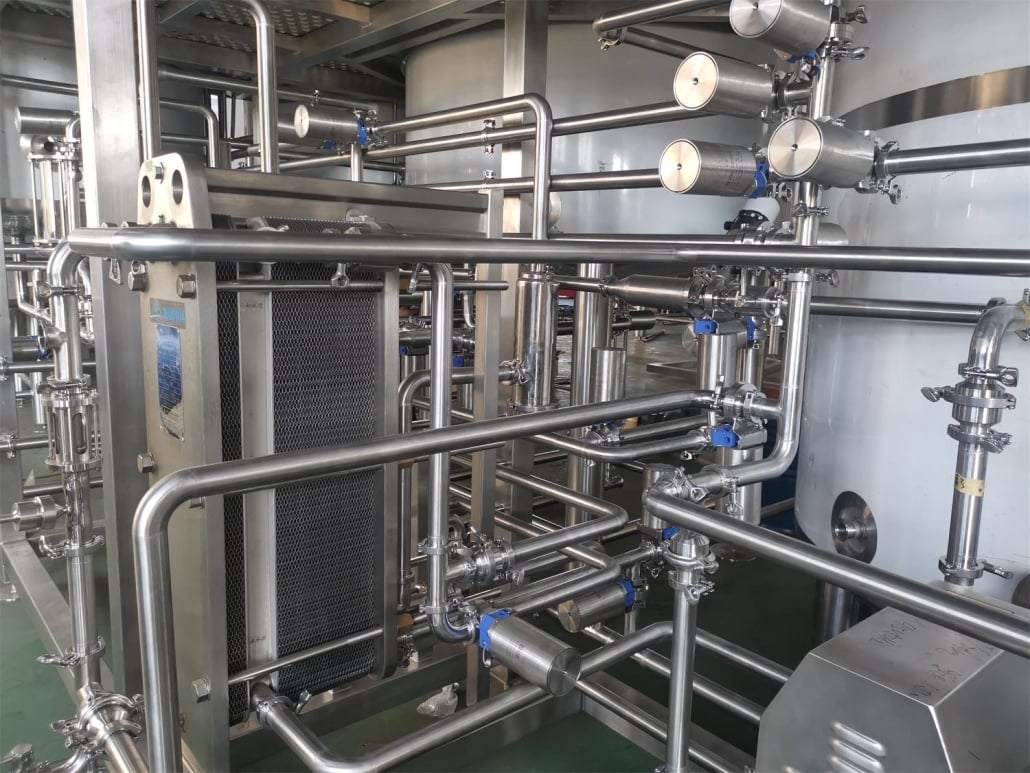
FAQ
Q: How much floorspace should a brewer allocate for 7 BBL fermentation equipment?
A: Expect 500-1,000+ square feet for multiple 7 barrel fermenter units plus cleaning/transfer spaces around the vessels and associated infrastructure.
Q: What level of glycol chilling capacity is ideal for 7 BBL sizes?
A: A good rule of thumb is to spec glycol chilling systems capable of pulling heat equivalent to around 4-5 times the batch size. So for 7 BBL units, target 28-35 BBL equivalent chilling power.
Q: What are early indicators of potential contamination or infection?
A: Off aromas, surface films, excess foaming, ropey yeast strands, changes to color, clarity or hop/malt balance can reflect undesired bacteria getting established in fermenters.
Q: Should brewers favor conical or cylindrical fermenters for 7 BBL batches?
A: Conicals simplify yeast harvesting but add fabrication complexity. Cylindrical tanks more easily accommodate future expansion. Evaluate workflow priorities as needs evolve over longer timeframes.
Q: How long can a professionally engineered 7 BBL fermenter remain productive?
A: With appropriate daily cleaning procedures plus routine maintenance replacing gaskets, sensors, cooling lines etc annually, 20+ years of service should be expected from quality stainless steel fabrication assuming no excessive mechanical damage or abuse occurs.


